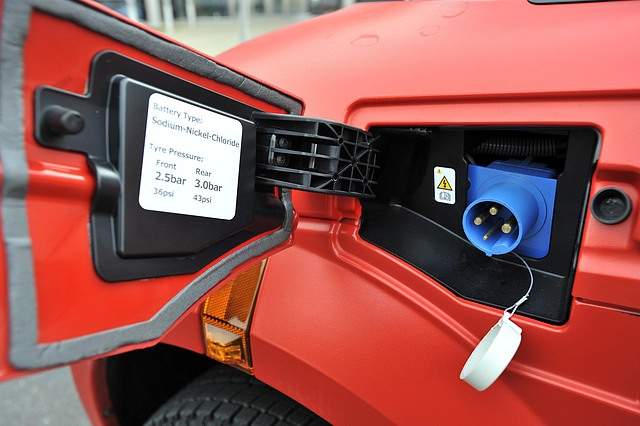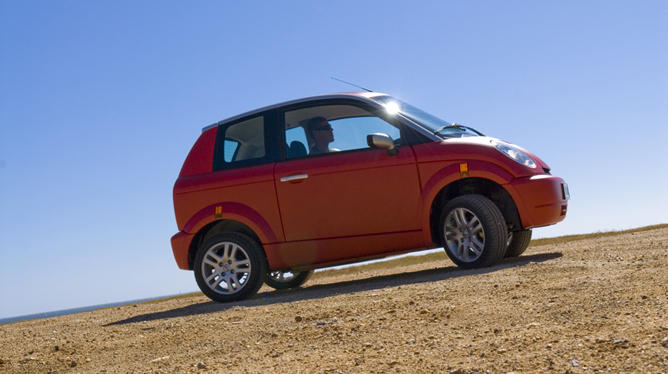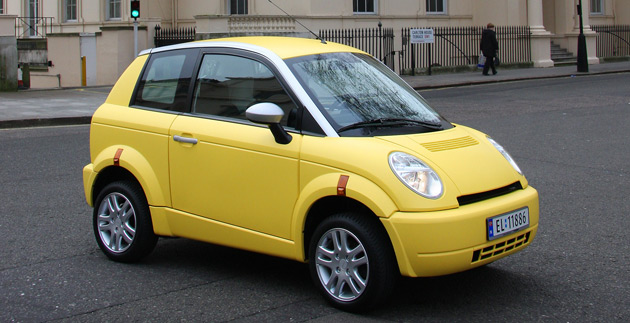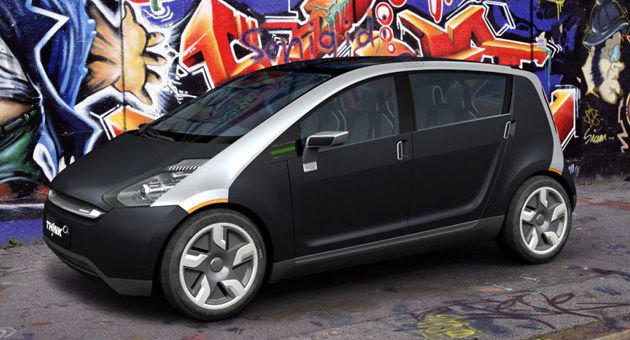Last Thursday was the 40th anniversary of Earth Day, and the CEO of one electric-car maker took the occasion to speak out on some of the popular myths around the manufacturing and use of electric vehicles.
Richard Canny, who runs the recently refinanced Think, published a list of "top 10 EV myths busted" to provide some rational counterpoints to a series of assertions about EVs. Some of the concerns are based in reality; others are simply ignorant.
NOTE: We did a little streamlining and copy editing.

Charging Port: Think City.

Think City

think city ev motorauthority 005

thinkcity_003


The Th!nkCity takes about four hours to charge and offers a driving range of up to 120 miles

Think Global was unveiling new concept vehicles like the Ox as recently as last year’s Geneva Motor Show
Here's the first half of Canny's list, along with our comments on Think's rebuttal to each one. We'll publish the second half tomorrow.
(1) You are just moving pollution out of the cities to the countryside.
Think says: Electric vehicle motors are 3 to 5 times [as] efficient [as] gasoline-powered vehicles. While it's best to power EVs from renewable energy sources (which are growing quickly), the efficiency of EVs makes them cleaner, producing less carbon, under any situation - even when they are charged using coal-fired electricity.
We say: Largely, but not entirely, true. It depends on what you're comparing to. If you compare to a gasoline car that gets 25 miles per gallon, it's entirely true. If you compare to a 50-mpg 2010 Toyota Prius, certain edge cases emit more carbon to drive 1 mile on grid power than on gasoline. One U.S. example: North Dakota's grid, which is powered almost entirely on (relatively dirty) coal.
(2) Customers will never buy a car with less than a 200-mile range
Think says: So-called ‘range anxiety' diminishes when people get used to driving EVs on a daily basis [and get used to charging their cars overnight like their cell phones]. As more EVs hit the road, businesses and cities will add charging points to encourage EV use. And THINK recently announced a new standard for fast charging-zero to 80% charged in just 15 minutes [for] those rare situations when an EV will be needed to cover more than 100 miles in a single day.
We say: Largely true. We would have added that multi-car households switch vehicles based on their daily duty cycle: Compact sedan for errands by one or two people, minivan or large sport-utility for hauling the soccer team to games. They'll do the same with electric vehicles, using them appropriately and leaving them home when more range is needed.
(3) The battery won't last
Think says: EV batteries are designed to last at least 10 years and more than 100,000 miles. THINK has cars on the road in Europe with batteries approaching the 10-year mark and [its] modern Lithium-ion batteries [will] meet or exceed that target.
We say: Agreed. No major carmaker is going to launch an electric vehicle without a high degree of confidence that the batteries will hold up.
(4) You'll need to build a lot more power plants
Think says: Actually, there's enough off-peak electricity in the U.S. to power 79% of U.S. driving demand. As more EVs are deployed, it's important to ensure that the smart-charging (time-based charging management) and vehicle-to-grid connectivity progresses as well.
We say: Correct. One study showed that even if one-third of all miles driven in the U.S. were powered from the grid, the increase in demand would be only a handful of percentage points.
(5) We're going to run out of lithium, and isn't it poisonous?
Think says: Lithium carbonate today comes from dried salt lakes in South America (Chile, Argentina and Bolivia) and China. There are also other huge sources for lithium, although these are more expensive to develop. The industry will not have a shortage of lithium for the next decade. It is also possible that new battery technologies will be based on other light metals like Zinc or Nickel.
Lithium from used batteries will be recycled in dedicated recycling plants. Lithium batteries contain no poisonous heavy metals like lead in lead-acid batteries or cadmium in NiCd batteries.
We say: Correct.
[Think]













